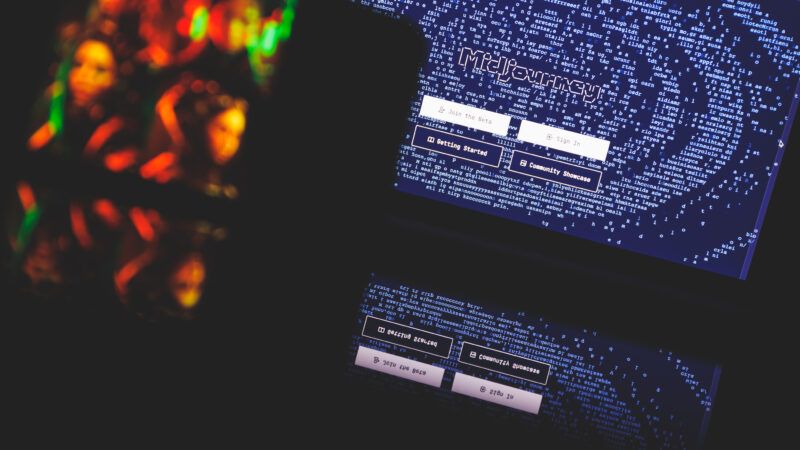Copyright Is the Latest Battle in the War Over A.I.
The U.S. Copyright Office determined that images produced by artificial intelligence cannot be copyrighted, even though they are generated by user-written prompts.

Increasingly sophisticated artificial intelligence (A.I.) is inching further into the mainstream, and nobody is quite sure what to make of it yet. Students protested after university administrators used the A.I. text generator ChatGPT to craft a statement after a mass shooting. Systems like Midjourney can create pieces of art so sophisticated, they can win awards—to the chagrin of flesh-and-blood artists.
Now the U.S. Copyright Office (USCO) has weighed in on the debate and determined that images produced by A.I. are not copyrightable.
In 2022, artist Kristina Kashtanova released the graphic novel Zarya of the Dawn for free online. Kashtanova wrote all the text and arranged the pages for the book but used Midjourney to create all of the visual images by feeding it text prompts. They applied for a copyright on the work, which the USCO granted in September 2022, specifically "to make a precedent."
But the following month, the USCO reversed its position based on Midjourney's role, stating "Copyright under U.S. law requires human authorship. The Office will not knowingly grant registration to a work that was claimed to have been created solely by machine with artificial intelligence."
In a decision released last week, the USCO determined that Kashtanova could copyright the comic's text and the "selection and arrangement of images and text" but not the images themselves.
The case raises the question of what, exactly, constitutes an original creation when an A.I. is involved, as well as who owns it. Last year, VentureBeat asked "Who owns" the images created by OpenAI's DALL-E, another A.I. image generator. Legal experts, and even OpenAI itself, seemed unsure.
Typically, in a work-for-hire situation, whoever commissions a work owns the copyright. And in a decision last year, the USCO concluded that an A.I. could not copyright its own art anyway "because copyright law…requires human authorship."
To be eligible for copyright under U.S. law, a work must demonstrate "at least a modicum" of creativity, a standard so low that it encompasses nearly everything except the phone book. The 9th Circuit Court of Appeals ruled in 1997's Urantia Foundation v. Maaherra that "some element of human creativity must have occurred in order for the [work] to be copyrightable."
In denying Kashtanova a copyright on the comic's images, the USCO cited U.S. Copyright Code against "register[ing] works produced by a machine or mere mechanical process that operates randomly or automatically without any creative input or intervention from a human author." But as the decision summarizes, creating Zarya of the Dawn required a laborious process of trial and error. Kashtanova may not have illustrated the images, but they fed the machine "hundreds or thousands of descriptive prompts" and sifted through "hundreds of iterations" of results to find the perfect visual for each use.
Regarding Midjourney's process, the decision stated that "the initial prompt by a user generates four different images based on Midjourney's training data. While additional prompts applied to one of these initial images can influence the subsequent images, the process is not controlled by the user because it is not possible to predict what Midjourney will create ahead of time."
Van Lindberg, Kashtanova's attorney, wrote over the weekend that the USCO used the wrong legal standard: "The standard is whether there is a 'modicum of creativity,' not whether Kashtanova could 'predict what Midjourney [would] create ahead of time.' In other words, the Office is incorrectly focusing on the output of the tool rather than the input from the human."
There is precedent for Kashtanova's case: Michael Noll, a researcher at Bell Labs, successfully copyrighted an A.I.-created image in 1965, on the premise that the machine created the image using an algorithm that Noll wrote. After Kashtanova's first copyright was issued, Benj Edwards wrote in Ars Technica that "this is the first time we know of that an artist has registered a copyright for art" created by the types of A.I. currently under discussion.
The USCO decision reflects the current capricious debate over artificial intelligence. Is A.I. a threat to the established order, or is it just another tool that artists can learn and master?
Show Comments (32)